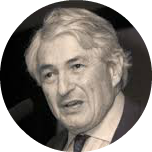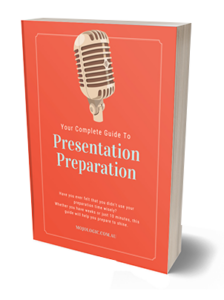6 Steps for a Strategic Planning Session that is all about YOU
Whether you think you can or you can’t – you’re right
-Henry Ford
Why do some individuals stand out as luminaries in their field. Why do some seem to reinvent themselves, personally and professionally? They always land on their feet? They are in the right place at the right time?
Is there such a think as the Midas touch?
Or, could it be that there is something far less mysterious at play? One reason for high performance is simple planning.
Lessons from a life fully lived
 James Wolfensohn has led an extraordinary life. Perhaps most famously, he became president of the World Bank in 1995. From quite humble beginnings as the only child of an Australian migrant family he became a pilot in the Australian airforce, participated in the 1956 Olympics, gained an MBA from Harvard Business School, became an investment banker at Shroders in London and went on to become the managing director in New York. In 1995 he become president of the World Bank. These are only a few of his professional achievements.
James Wolfensohn has led an extraordinary life. Perhaps most famously, he became president of the World Bank in 1995. From quite humble beginnings as the only child of an Australian migrant family he became a pilot in the Australian airforce, participated in the 1956 Olympics, gained an MBA from Harvard Business School, became an investment banker at Shroders in London and went on to become the managing director in New York. In 1995 he become president of the World Bank. These are only a few of his professional achievements.
Wolfensohn is also an accomplished musician in his own right and has served on the boards of a number of charitable organisations including the Kennedy Center for Performing Arts and the Rockefeller Foundation.
In his book, A Global Life, you can read the back story and be inspired.
One thing, not discussed in any reviews is a small but mighty personal practice. A personal strategic offsite. Wolfensohn routinely and regularly set time aside to set goals, consider progress and plan for personal achievement.
It is personal, after all
In the business world we understand the importance of strategic planning. You will have attended an offsite where hopefully the output included a clear set of objectives and a plan. At best, the team was motivated, focused and committed to the achievement of defined business goals.
We know strategic planning is important and much has been written on the subject. But what is rarely explored is the idea of personal strategic planning.
Consider how could you personally benefit when you are completely focused on yourself. You will examine your current reality, explore the ideas that have been floating around in your sub conscious and build a plan for the next phase of your own career.
Whether you are an entrepreneur, employee, manager or leader; you are the only one that truly controls the reigns of your career and lifestyle. We will inevitably be challenged by upsets. There will be market fluctuations, category shifts, restructures and redundancies. We have to pay the bills, meet our deadlines and do the job we are paid to do.
But, what could you do to get rid of that nagging feeling that this year will be just like last year and the one before that?
Corporate strategic planning is all about deciding what to do and what not to do. It’s about the allocation of resources.
Personal strategic planning is all about return on energy. Where will you direct your energy?
What would you like to see grow this year?
Step 1: Just Book It
Make an appointment with yourself. Decide on a space where you:
- will be able to concentrate
- are inspired or at least relaxed
- can cut yourself off from potential distractions
- have space to spread out – use the walls, whiteboard, post-it notes, etc.
Here is a radical idea; choose a venue where wifi and mobile connectivity are not available.
Step 2: Get Help (especially if you are likely to skip Step 1)
This is a process you could tackle for yourself, but it can be hard for many. In fact, I believe this lack of accountability may be the main reason we don’t engage in this process. If you believe you are likely to become distracted, wander off course or simply fail to show up, then get some help.
There are a few options here. You could buddy up with someone and co-facilitate. To make this work you will need a defined agenda. Focus completely on one persons strategic plan, then swap. You may wish to separate the two sessions, holding each on a different day or at least take a lunch break.
Alternatively you could engage the services of an executive coach. This is a professional relationship where you will be
guiding through the process of analysis, visioning and planning. A business solely dedicated to the process of personal strategic planning is act 3 – this could be the right approach for you.
Step 3: Know Thyself – establish a clear picture of your current reality
Just like with corporate strategic planning, we recommend a quick review of the current reality. Its equal parts self-awareness and self-evaluation. Choose a method to capture your thoughts – post it notes, whiteboard, butchers paper or a tech solution if that suits you.
Start positive – what are you good at?
With pen in hand start listing all of your strengths and skills. Try to go beyond how you typically think about yourself and consider what others might say about you (whether you are in the room or not!), what your latest performance review might tell you, feedback from peers, etc.
Make sure you capture the full picture of your personal strengths beyond those that relate to your current job.
What could you improve?
Consider the skills you would like to develop and the knowledge you would like to build. Perhaps you have certain traits or habits that are not serving you. What would you like to stop doing?
Once you have a picture of the current reality put it up on the wall – this will form the background for the next stage.
Step 4: Think Big – Create a vision of the future you want
So, here is the central question:
If you could do anything what would it be?
Just for a moment imagine there are no restrictions, financial, time or otherwise. If you could do anything, what would it be?
You might just need to pause here. Go for a run (if you are into that sort of thing) or a walk. Wash the dishes or do the vacuuming. With this question firmly planted in your head, a mundane task may help to dislodge the answer.
Some other questions you might consider: What do you want to be doing in 10 years time? Project yourself into the future and consider:
- what are people saying about you now? (your achievements and contributions – professional and otherwise)
- how do you spend the majority of your professional time?
- how do you spend the majority of your leisure time?
- what is your attitude to work?
At this stage you need to unlock as much creativity as you can muster. Standard questions around financial/revenue/income targets may help clarify your current reality but they won’t provide you with a vision of what the future could look like.
Create that future in your mind. Walk around in it and observe what it feels like.
What are the biggest differences between your future potential self and your current reality?
Step 5: Break it Down – identify a goal and document objectives
Now that you have a good picture of your current reality and a vision of where you want to be, you need a strategy to close the gap.
Keep your list of goals short. After all, if everything is important, then nothing is important. In fact, there are many experts that would say that one goal, at least in the short term, will be most effective. Prioritisation is crucial.
- what will make the single biggest difference this year?
- which course of action, no matter how difficult, will deliver the biggest return?
If all else fails:
- what do you really really really want to do now? Willpower is finite so if your heart isn’t in it you will find it a constant battled to stay the course.
Choose one goal for a fixed period of time. Realistically consider all the strategies, tactics and dependencies you must to achieve your goal.
Use your coach, mentor or buddy to help keep you on track. Don’t let the wheels fall off now!
Step 6: Commit to Execution
Congratulate yourself on getting to this step. Many don’t and having gone through the thought process to this point is a big accomplishment.
The devil comes tomorrow in the form of your real life!
The phone rings, the diary overflows, the inbox becomes flooded.
You must have a strategy for executing on your plan. Again, a coach, mentor or buddy can help. Set up touch points at regular intervals. Only you are truly accountable, but you can leverage the psychological phenomenon of consistency and commitment by making some promises out loud.
Final Advice
High achievement always takes place in the framework of high expectation.
Good luck.





